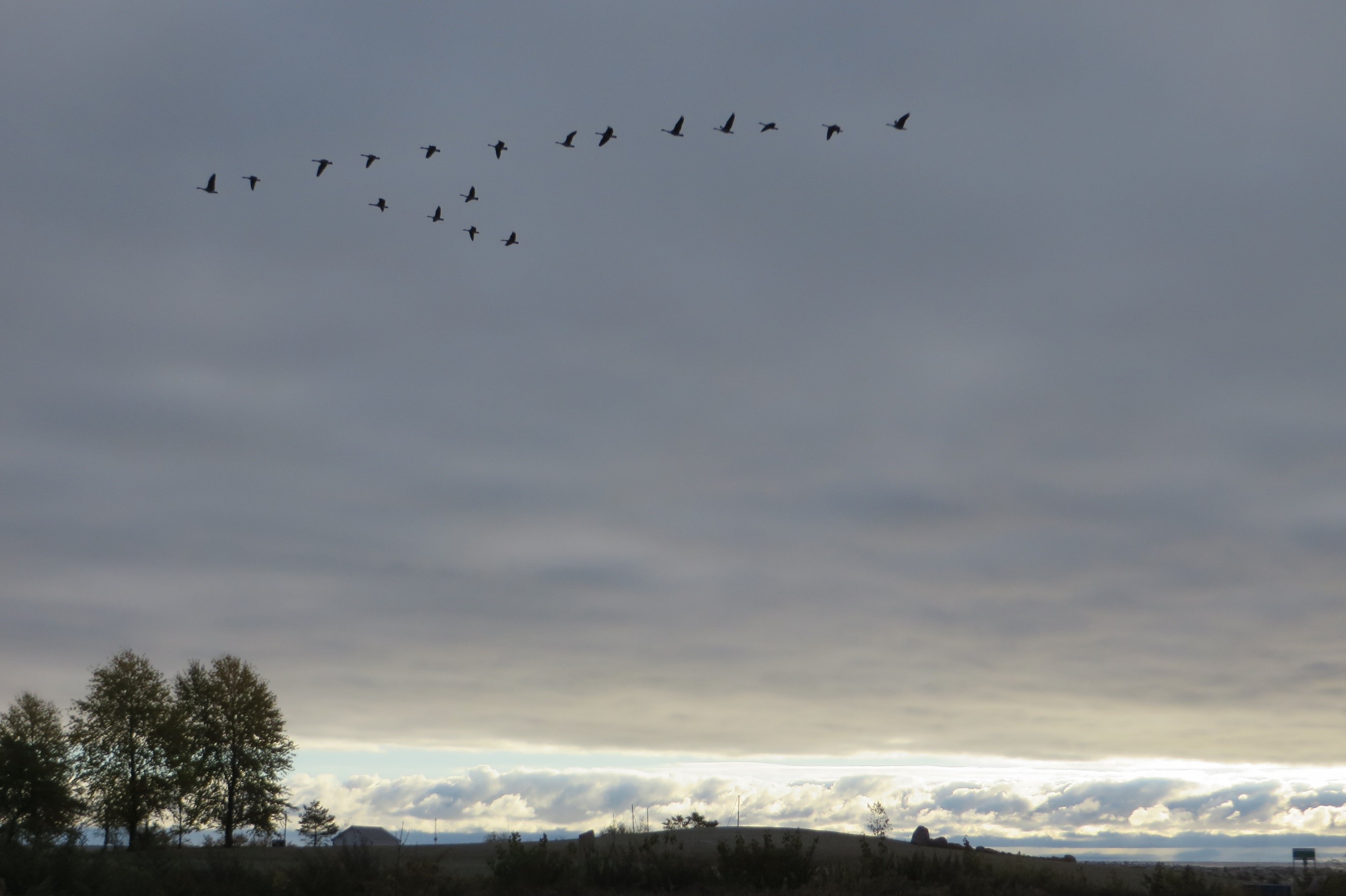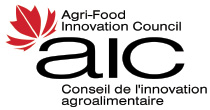Gender Equality Mainstreaming Digest – November 2018 Issue
Here are the highlights of this month’s Gender Equality Mainstreaming Digest! Click HERE for the full version.

Canada geese flying in typical V-formation over Lake Winnipeg. Photo courtesy of D. Ceplis.
Highlights:
Opportunities and Upcoming Events:
Webinar: Making sense of ‘intersectionality’ – Do you want to learn more about gender research in agriculture and natural resource management?
Check out the webinar on “Making sense of ‘intersectionality’”, by CGIAR Collaborative Platform for Gender Research on Thursday November 15 (3.00-4.30pm CET). The webinar is organized in collaboration with the CGIAR Research Program on Forests, Trees and Agroforestry (FTA).
The webinar aims to introduce ‘intersectionality’ to researchers working on applied agriculture and natural resource management research who are unfamiliar with the term and/or unsure about how to apply them in their research. Practitioners and policymakers who are concerned with using data, evidence and analyses to ensure that ‘no one is left behind’ – one of the core promises of the Agenda 2030 on Sustainable Development – would also find this webinar to be useful.
Call for Proposals: Status of Women Canada’s Women’s Program – Status of Women Canada is inviting women’s organizations and Indigenous organizations serving women that work to advance gender equality to submit proposals for projects under the Capacity-building Fund call for proposals. The objective of this Call for Proposals (CFP) is to fund proposals that will increase the capacity of eligible women’s and Indigenous organizations whose initiatives contribute to a viable women’s movement in Canada to advance gender equality. Funding will increase organizational capacity and help organizations work collectively to address gender equality issues.
Deadline for submission: December 11, 2018, at 11:59 a.m. Pacific Time
This Month’s News:
The Women’s Empowerment in Agriculture Index (WEAI) – Earlier this year, the Gender, Agriculture, and Assets Project, Phase 2 (GAAP2) launched the pilot version of the project-level Women’s Empowerment in Agriculture Index (pro-WEAI), a new survey-based index for measuring empowerment, agency, and inclusion of women in the agriculture sector. On October 25th, the GAAP2 team will introduce the latest version of the pro-WEAI at a special event at the International Food Policy Research Institute in Washington, DC.
The pro-WEAI builds on the Women’s Empowerment in Agriculture Index (WEAI) and is adapted for project use with a closer focus on aspects of empowerment related to health and nutrition. The index is being developed by the GAAP2 project, a learning and capacity-building initiative led by IFPRI that works with 13 agricultural development projects. GAAP2 is supported by the Bill & Melinda Gates Foundation, Feed the Future (led by USAID), and the CGIAR Research Program on Agriculture for Nutrition and Health (A4NH).
The event will include panelists representing organizations that are potential users of pro-WEAI, who will discuss how the tool can support knowledge management in their projects. The discussion will also solicit feedback from the broader development community, including donors, NGOs, and the private sector, about pro-WEAI’s usefulness in promoting women’s empowerment in agricultural projects and as part of national statistical surveys, and further discuss what policy implications can be derived from these analyses.
Sex-disaggregated data on climate-smart agriculture in CCAFS publications – TThe inclusion of gender analysis and the collection of sex-disaggregated data in agriculture research can improve food security and increase productivity and incomes.
The Climate Change, Agriculture and Food Security (CCAFS) Gender and Social Inclusion Unit compiled a list of CCAFS publication with sex-disaggregated data on climate-smart agriculture. You can find over 100 publications categorized by regions.
Concordia engineering school becomes first in Canada named after a woman as alumna donates $15-million – Gina Cody arrived in Montreal, Canada with $2,000 in her pocket and little more than a dream to become an engineer. It was 1979. Her homeland of Iran was in the throes of a revolution, and she escaped on the last flight out. Now, she is donating $15-million to her alma mater, a gift that will be used to increase diversity in a traditionally male-dominated field. The Gina Cody School of Engineering and Computer Science becomes the first engineering faculty in Canada – and one of the first internationally – to be named after a woman.
The gift will endow three research chairs and offer scholarships aimed at boosting diversity in a field in which women remain the exception. Women account for only 20 per cent of students in undergraduate engineering programs in Canada and fewer than 13 per cent of working engineers.
True Cost of a Plate of Food Around the World – How much would you expect to pay for the most basic plate of food? The kind of thing you might whip up at home – nothing fancy, just enough to fill you up and meet a third of today’s calorie needs. A soup, maybe, or a simple stew – some beans or lentils, a handful of rice, bread, or corn?
In the rich Global North – say, in New York State, USA – such a meal would cost almost nothing to make: 0.6 percent of the average daily income, or US$1.20.
In parts of the developing world, by contrast, food affordability can shrink to the point of absurdity: in South Sudan, a country born out of war and disintegrating into more war, the meal-to-income ratio is 300 times that of industrialized countries.
It is, in other words, as if a New Yorker had to pay nearly US$348.36 for the privilege of cooking and eating that plate of food. How do people in South Sudan afford it? It’s simple. They don’t.
Societies cannot lift themselves out of the poverty trap if families are continuously priced out of providing their children with the nutritional meals essential for them to develop into healthy and productive adults, if climate degradation continues to threaten food security and development gains, and if protracted conflicts continue to destroy societies and force young talent elsewhere.
With a concerted global effort, the international community can achieve the UN Sustainable Development Goals and end hunger and malnutrition. Governments must engage with and support their developing country counterparts in peacebuilding, conflict resolution and disaster risk reduction.
The private sector must embrace that turning a profit can go hand in hand with advancing the Sustainable Development Goals (SDGs) through employing young people to boost incomes, sourcing from smallholder farms, and through working alongside leaders to strengthen supply chains.
The shocking and outraging numbers in this year’s “Counting the Beans” index highlight that peaceful societies and affordable food go hand in hand. We have the modern technological capacities to end world hunger, but first we must end the conflict that fosters it.
Reports Publications and Resources:
What works for gender-norm change? : enhancing gender-inclusive agricultural development programming – Abstract: This Research for Development (R4D) Policy Report summarizes findings from a meta-analysis of external evaluations of Ethiopian agricultural development projects, while also highlighting best practices around gender programming. It explores: What works for gender norm change in agricultural development projects? Intent on building a body of evidence, the inclusion criteria required documents to be: external; methodologically rigorous; incorporate gender in the evaluation; and demonstrate social norm change. With this strict inclusion criteria, external evaluations were then assessed for best practices (n=2), while the disqualified evaluations (n=24) were analyzed for areas in need of improvement. The findings show that the CARE Ethiopia office is producing the most rigorous and successful projects around gender norm change. Agricultural development project evaluations are currently a lost opportunity for learning ‘what works’ for gender norm change. The findings outline both what to do and highlight what to avoid in undertaking gender transformative development.
Women in Food and Farming – Fair World Project, Issue 17, Fall 2018/Winter 2019
Women make up nearly half of the people who grow and process food around the globe. Yet too often, their voices and their unique struggles go unheard.
In this issue, we focus on the ways women are coming together and organizing to transform their lives, their communities, and the farming and food systems that impact us all.
We hear from Dolores Huerta, civil rights icon and co-founder of the United Farm Workers of America, inspiring perspectives from La Via Campesina, the Coalition for Immokalee Workers, and others.
Can farming improve the lives of rural women and girls? – Reducing gender inequality is one of the great challenges of the 21st century. Nowhere are concerns greater than where the disadvantages of being a woman intersect with the disadvantages of living in rural areas of developing countries. In rural areas, access to education and health services is often limited, and women are more likely to depend on farming for a livelihood. As a result, interest in women farmers has grown strongly in recent times. Studies proliferate on the conditions of women as farmers in the global South, as do debates on how best to rectify disadvantages and improve the conditions under which women farm.
While this is all encouraging, how important is farming to improving the lives of rural women and girls? Studies of changes to their lives in countries that have progressed from low- to middle-income status since the early 1960s suggest that some of the main drivers of improved lives lie outside of agriculture: in education, health, women-friendly family planning, and opportunities in the non-farm economy.
To mark International Day of Rural Women on 15 October, ODI convenes an expert panel to explore this question further.
